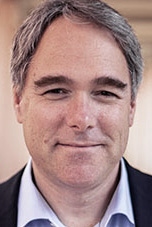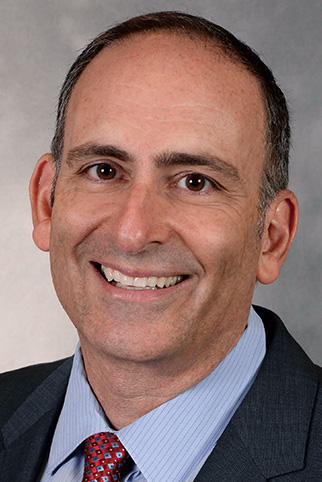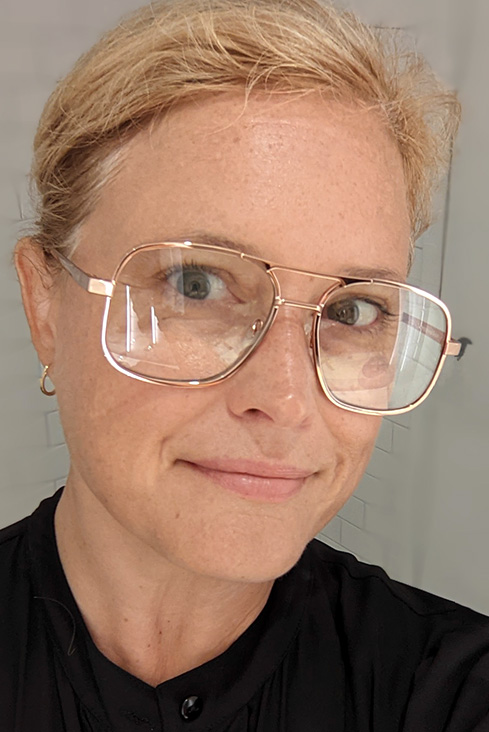
 A long-running issue resurfaced recently asking if light poles should be made available for telecommunications. This idea that light poles might be telecom infrastructure comes from language included in Section 224 of the United States Federal Communications Commission's (FCC) code that says that a "utility shall provide a cable television system or any telecommunications carrier with nondiscriminatory access to any pole, duct, conduit, or right-of-way owned or controlled by it." more
A long-running issue resurfaced recently asking if light poles should be made available for telecommunications. This idea that light poles might be telecom infrastructure comes from language included in Section 224 of the United States Federal Communications Commission's (FCC) code that says that a "utility shall provide a cable television system or any telecommunications carrier with nondiscriminatory access to any pole, duct, conduit, or right-of-way owned or controlled by it." more
 Five years ago, any discussion of 5G included a vision that we'd end up with smart cars that were all connected with a ubiquitous 5G network that was going to be built everywhere. We're still waiting to see a real 5G network anywhere instead of the 4G LTE networks that are still being touted by every cellular company as 5G. The idea of a ubiquitous network capable of supporting smart cars died, but there is still an effort underway to use wireless technology to make car travel safer. more
Five years ago, any discussion of 5G included a vision that we'd end up with smart cars that were all connected with a ubiquitous 5G network that was going to be built everywhere. We're still waiting to see a real 5G network anywhere instead of the 4G LTE networks that are still being touted by every cellular company as 5G. The idea of a ubiquitous network capable of supporting smart cars died, but there is still an effort underway to use wireless technology to make car travel safer. more
 The "Decoding Internet Governance Stakeholders" series of articles invites the community to ponder what underlies the labels that define our interactions, roughly 20 years after the "Tunis Agenda for the Information Society" called for the "full involvement of governments, business entities, civil society and intergovernmental organizations," as well as to "make full use of the expertise of the academic, scientific and technical communities." more
The "Decoding Internet Governance Stakeholders" series of articles invites the community to ponder what underlies the labels that define our interactions, roughly 20 years after the "Tunis Agenda for the Information Society" called for the "full involvement of governments, business entities, civil society and intergovernmental organizations," as well as to "make full use of the expertise of the academic, scientific and technical communities." more
 Do human rights come into the picture when technology and policy work are involved? If so, where? This is a question that has come up multiple times during the last dozen years, and occasionally even before, in Internet Governance discussions. These discussions have included debates on whether human rights were specifically applicable to protocol design or to the organizations developing protocol standards. more
Do human rights come into the picture when technology and policy work are involved? If so, where? This is a question that has come up multiple times during the last dozen years, and occasionally even before, in Internet Governance discussions. These discussions have included debates on whether human rights were specifically applicable to protocol design or to the organizations developing protocol standards. more
 Over the past several weeks, there has been significant discussion about Verisign and its management of the .com top-level domain (TLD) registry. Much of this discussion has been distorted by factual inaccuracies, a misunderstanding of core technical concepts, and misinterpretations regarding pricing, competition, and market dynamics in the domain name industry. more
Over the past several weeks, there has been significant discussion about Verisign and its management of the .com top-level domain (TLD) registry. Much of this discussion has been distorted by factual inaccuracies, a misunderstanding of core technical concepts, and misinterpretations regarding pricing, competition, and market dynamics in the domain name industry. more
 ICANN must act now to harmonize its domain name registration data (commonly known as WHOIS) policies with Article 28 of the European Union's Network and Information Security (NIS2) directive, first to adhere to applicable laws as it fulfills its oversight responsibilities and, second, to keep its word to the community to preserve WHOIS to the fullest extent possible under law. more
ICANN must act now to harmonize its domain name registration data (commonly known as WHOIS) policies with Article 28 of the European Union's Network and Information Security (NIS2) directive, first to adhere to applicable laws as it fulfills its oversight responsibilities and, second, to keep its word to the community to preserve WHOIS to the fullest extent possible under law. more
 In doing a recent search, there it was: the first White House website archived at the U.S. Archives. It ended up changing the direction of markets and network development, if not world politics. How it came to be is known only to the few people involved. It is a great example of individual initiative, collective whimsy, serendipity, and unintended consequences... When Bill Clinton arrived at the White House on 20 January 1993, he brought with him a kind of rag-tag team who had helped him get there. more
In doing a recent search, there it was: the first White House website archived at the U.S. Archives. It ended up changing the direction of markets and network development, if not world politics. How it came to be is known only to the few people involved. It is a great example of individual initiative, collective whimsy, serendipity, and unintended consequences... When Bill Clinton arrived at the White House on 20 January 1993, he brought with him a kind of rag-tag team who had helped him get there. more
 Anybody not involved in the telephone business will probably be surprised to find that the old TDM telephone networks are still very much alive and in place. The old technologies were supposed to be phased out and replaced by digital technologies. The FCC started talking about this before 2010. In 2013, Tom Wheeler, the FCC Chairman at the time, announced an effort to force the needed changes, which was dubbed the IP Transition. more
Anybody not involved in the telephone business will probably be surprised to find that the old TDM telephone networks are still very much alive and in place. The old technologies were supposed to be phased out and replaced by digital technologies. The FCC started talking about this before 2010. In 2013, Tom Wheeler, the FCC Chairman at the time, announced an effort to force the needed changes, which was dubbed the IP Transition. more
 At the recent Internet Corporation for Assigned Names and Numbers (ICANN) 80 Policy Forum meeting, one notable takeaway was its close focus on questions around the stability and security of the technical layer of the Internet: the growing risks which assail it, and potential ways to address these through governance. more
At the recent Internet Corporation for Assigned Names and Numbers (ICANN) 80 Policy Forum meeting, one notable takeaway was its close focus on questions around the stability and security of the technical layer of the Internet: the growing risks which assail it, and potential ways to address these through governance. more
 On June 9 CircleID published an insightful article by Thomas Rickert entitled "Demystifying Art 28 NIS2." In that piece Thomas set forth two alternative interpretations of Article 28(6) of NIS2, and argued that TLD registries should not be required to maintain a separate database of the registrant data under NIS2. In my view, Thomas' approach is inconsistent with the remainder of Article 28, and would not achieve the goals of NIS2 to improve cybersecurity across the EU member states. more
On June 9 CircleID published an insightful article by Thomas Rickert entitled "Demystifying Art 28 NIS2." In that piece Thomas set forth two alternative interpretations of Article 28(6) of NIS2, and argued that TLD registries should not be required to maintain a separate database of the registrant data under NIS2. In my view, Thomas' approach is inconsistent with the remainder of Article 28, and would not achieve the goals of NIS2 to improve cybersecurity across the EU member states. more
 In the same way monarchs are proclaimed - by powerful stakeholders attending a coronation and not objecting - the UN's International Telecommunication Union (ITU) took a mandate last week to coordinate AI Safety worldwide, with most industry leaders and relevant UN agencies were present when it did so. more
In the same way monarchs are proclaimed - by powerful stakeholders attending a coronation and not objecting - the UN's International Telecommunication Union (ITU) took a mandate last week to coordinate AI Safety worldwide, with most industry leaders and relevant UN agencies were present when it did so. more
 On December 14, 2022, the European Parliament adopted the Directive on measures for a high common level of cybersecurity across the Union (Directive (EU) 2022/2555) hereinafter referred to as "NIS2"), which was published in the official journal on December 27, 2022. Being a directive, NIS2 requires transposition into national law. According to Art. 41 of NIS2, the transposition into national law must take place by October 17, 2024 and the measures must be applied as of October 18, 2024. more
On December 14, 2022, the European Parliament adopted the Directive on measures for a high common level of cybersecurity across the Union (Directive (EU) 2022/2555) hereinafter referred to as "NIS2"), which was published in the official journal on December 27, 2022. Being a directive, NIS2 requires transposition into national law. According to Art. 41 of NIS2, the transposition into national law must take place by October 17, 2024 and the measures must be applied as of October 18, 2024. more
 As Chairs of ICANN's Registries and Registrar Stakeholder Groups, we are proud to announce that we have initiated a new practice for the Contracted Parties Summits: the publication of our Contracted Parties Summit Statement. As you may (or may not) know, Contracted Parties get together periodically to interact and work together on issues that we care about, and which impact our businesses as registries and registrars. more
As Chairs of ICANN's Registries and Registrar Stakeholder Groups, we are proud to announce that we have initiated a new practice for the Contracted Parties Summits: the publication of our Contracted Parties Summit Statement. As you may (or may not) know, Contracted Parties get together periodically to interact and work together on issues that we care about, and which impact our businesses as registries and registrars. more
 Sixty years ago, Paul Baran and Sharla Boehm at The RAND Corporation released a seminal paper that would fundamentally reshape the cyber world forever more. Their paper, simply known as Memorandum RM -- 1303, described how specialized computers could be used to route digital communications among a distributed universe of other computers. It set the stage for a flood of endless developments that resulted in the interconnected world of everything, everywhere, all the time. more
Sixty years ago, Paul Baran and Sharla Boehm at The RAND Corporation released a seminal paper that would fundamentally reshape the cyber world forever more. Their paper, simply known as Memorandum RM -- 1303, described how specialized computers could be used to route digital communications among a distributed universe of other computers. It set the stage for a flood of endless developments that resulted in the interconnected world of everything, everywhere, all the time. more
 The Washington Post recently published an article with a series of graphs showing the impact of the pandemic on various economic indicators, including unemployment, wages, air travel, grocery prices, home prices, and consumer sentiment. The article got me thinking about the impact of the pandemic on the broadband industry, and several important changes emerged from our collective pandemic experience. more
The Washington Post recently published an article with a series of graphs showing the impact of the pandemic on various economic indicators, including unemployment, wages, air travel, grocery prices, home prices, and consumer sentiment. The article got me thinking about the impact of the pandemic on the broadband industry, and several important changes emerged from our collective pandemic experience. more